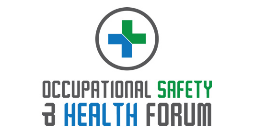Over the last ten years, workplaces worldwide, and particularly in the UK, have witnessed a profound transformation in their approach to employee stress management and awareness. Once a sidelined topic, it has now been catapulted to the forefront of organisational culture and strategy. Here we delve into the changing landscape of stress management and the proactive steps taken by companies to ensure the mental and emotional well-being of their workforce, based on input from delegates and suppliers at the Occupational Safety & Health Summit…
- From Taboo to Open Dialogue: A decade ago, stress, mental health, and well-being were often taboo subjects in the workplace. Fast forward to today, and there’s been a paradigm shift. Organisations actively encourage open dialogue, fostering environments where employees feel safe to discuss their mental health challenges without stigma.
- Holistic Well-being Programmes: The previous decade’s employee assistance programmes, often limited to helplines or occasional counselling, have expanded. Modern well-being initiatives encompass a holistic approach, integrating physical health, mental health, financial education, and social connectivity.
- Flexible Working Arrangements: Recognising the stress associated with rigid working hours and long commutes, many businesses have adopted flexible working policies. The recent pandemic accelerated this trend, emphasising work-life balance and the benefits of hybrid or fully remote working models.
- Mindfulness and Resilience Training: Mindfulness, once a fringe concept, has now entered mainstream corporate culture. Companies frequently offer meditation sessions, yoga classes, and resilience training, understanding that equipping employees with tools to handle stress benefits both individuals and the organisation.
- Data-driven Interventions: Technological advancements have enabled companies to use data analytics in assessing the well-being of their staff. Regular surveys, feedback tools, and wearable technologies provide insights into stress levels and patterns, allowing for timely interventions.
- Leadership Training on Mental Health: A crucial development has been the recognition that leadership plays a pivotal role in employee well-being. Training programmes now often incorporate modules teaching managers to recognise signs of stress among their teams and provide the necessary support.
- Emphasis on Work-life Integration: Previously, the focus was on work-life balance, implying a clear demarcation between professional and personal lives. The narrative has now shifted towards work-life integration, acknowledging the interplay between various life facets and the importance of harmonising them.
- Proactive Mental Health Initiatives: Organisations no longer wait for signs of excessive stress or burnout. Proactive measures, from regular check-ins to creating relaxation zones within the office, are common. Mental health days and extended leaves for rejuvenation have also gained traction.
In conclusion, the past decade has signified a period of enlightenment for organisations, recognising the invaluable asset of employee well-being. From opening channels of communication to integrating well-being into the organisational DNA, businesses have realised that managing and mitigating stress is not just ethically right but also economically sound. As we move forward, this trend of prioritising mental and emotional health will likely intensify, creating workplaces that are not just productive but also nurturing and empathetic.
Are you searching for partners to help your business manage employee stress? The Occupational Safety & Health Forum can help!
Photo by Luis Villasmil on Unsplash







